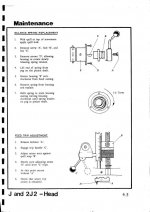Kincardine
Aluminum
- Joined
- Dec 29, 2007
- Location
- Kincardine, Ontario, Canada
Hi folks, I need to replace mine in a 1969 Series 1 J head. I already have the new part from Hardinge.
What I wouldn't mind, is a bit of a walkthrough on this. Winding the spring, number of turns, etc. I would think this a common question.
If anyone can provide a link to this info, I will be very thankful!
Cheers, John
What I wouldn't mind, is a bit of a walkthrough on this. Winding the spring, number of turns, etc. I would think this a common question.
If anyone can provide a link to this info, I will be very thankful!
Cheers, John


